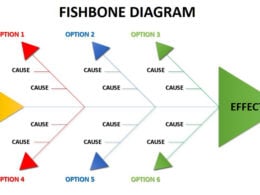In an effort to create diversity in business ownership, both government and big business have come up with a number of minority setaside programs for women entrepreneurs and minority-owned small businesses.
These setasides can be a great boon to minorities or women entrepreneurs. “I have gotten a lot of business from these programs that otherwise I wouldn’t have obtained, because I was bidding against bigger competitors with bigger staffs,” says Karen Terry, owner of CM Services, a software consultant in Austin, Texas, who has won a number of contracts with Texas state agencies.
Figure out if you qualify
By definition, minorities and women entrepreneurs have a great chance of qualifying for public and private setaside programs. Typically, you just need to be female or a member of an ethnic minority; you must be the majority owner of your company; and your company must be able to demonstrate both current viability and sound prospects for future success.
There are also minority setaside programs for disabled people and military veterans. “I was surprised to find out about this when I went to a Small Business Administration expo last spring,” says Brian Drum, a veteran who heads Drum Associates, his own executive-search business in New York City. “And now I’m in the qualification process.”
Learn about government programs for minorities and women entrepreneurs
Countless government agencies at every level grant specific percentages of their contracts to minorities and women entrepreneurs.
At the federal level, for example, women and minorities can “self-certify” and enter what’s known as the Central Contracting Registry database, which is used extensively by both federal agencies and large contractors seeking small businesses. The primary Small Business Administration program to help “disadvantaged” minorities or women entrepreneurs is known as 8a Business Development.
Similar programs thrive across the country at each successive level of government – state, county and local. And each presents its own particular advantages and application requirements.
Investigate supplying big companies
Large companies can offer equally attractive setaside opportunities, partially because of their own commitment to creating diversity in the marketplace and their employment base. Often, these Fortune 500 companies are federal or state contractors mandated by government agencies to allocate certain amounts of business to minority firms.
“The reason corporations want to buy now from women and minorities is because it makes good business sense to do so,” says Mary Cantando, a government-certified female business owner and is author of the book, The Woman’s Advantage. “That’s the total bottom line; it’s not just because it’s the right thing to do.”
Arrange a setaside with your former employer
If you’re a minority member and you’re planning to start up a business, one strategic way that you might be able to tap into setaside programs to jump-start your company is to make your current employer your first client. Only you know whether this sort of thing would fly with your boss – or whether it might cost you your job! But having your former employer outsource work to you could give them an extra step toward compliance with their setaside goals and you a start as a new company.
“Eventually you can lower your costs to that former employer, who’s now your client, because you can add other clients,” says Oris Stuart, managing partner of the Philadelphia office of Global Lead, a diversity-management consulting firm. “It’s a remarkable way for still-employed people to cut the risks of launching their own business.”
Apply now!
The application process itself can be demanding and time-consuming. Sometimes there are waiting periods regarding how long you must have been in business before you can obtain certification. Sometimes it can take government or corporate bureaucracies several months to process your application.
And anticipate that, in an effort to qualify you and your business, either private or public entities may ask you some unusual.questions. Those questions might include: where do your clients get their revenues; how are your company’s own expenses organized; what is the background and makeup of your staff; and where do you and your employees live. That final question is most likely to be asked in the case of local-government setasides that have residency requirements.
Recognize the programs’ limitations
Some small companies can find program requirements onerous. To effectively invoice a government agency and obtain timely payment can be difficult and protracted. And additionally, when you land government contracts, you must meet equal-employment and diversity standards.
What’s more, outbreaks of fraud have wracked many of these programs over the years. And as reformers have moved in, some of the barriers to entry for startups have risen. “What that means for the entrepreneur,” says Stuart, “is that the hurdles are higher, and the certification and qualification processes are stiffer – but the opportunities are still out there.”
Keep in mind that these programs are meant to give entrepreneurs a leg up, not a lifetime meal ticket. Many government agencies can cut off most contracts, for example, “for convenience” – meaning that they can do it at any time and don’t really owe you an explanation.
Also, there’s the matter of “graduating” from setaside programs as your business grows. Expansion of your company is great, but it may mean that you no longer qualify as “disadvantaged” even if you’re still the majority owner.
“Thirty years ago, we benefited from the 8(a) program,” says Ruben Hinojosa Jr., vice president of sales and marketing for H&H Foods, based in Mercedes, Texas. “That took us from being a small and regional company into being a national company. But we no longer qualify for the programs that we did.”
Our Bottom Line
Many minorities and women entrepreneurs can give themselves an edge by qualifying their small business for a setaside program. These programs, offered by government and business, can mean a lot of jumping through hoops, but usually the leap is worth the effort!






